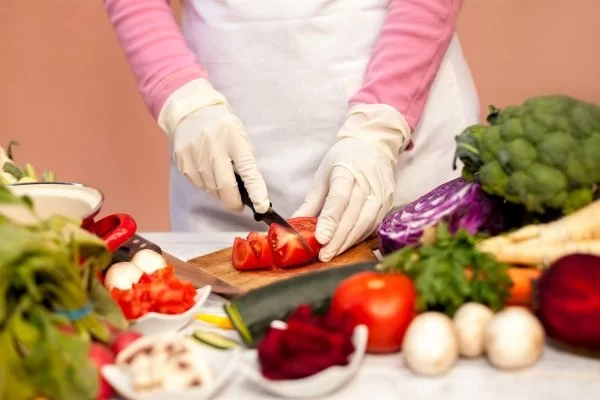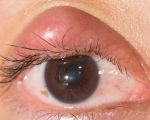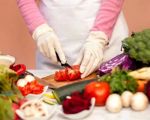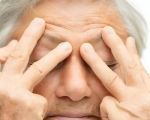
- understanding-the-risks-of-eye-injuries-in-the-kitchen
- protecting-your-eyes-from-oil-splashes-and-hot-steam
- chopping-cutting-and-preventing-debris-related-injuries
- cleaning-chemicals-and-safe-handling-practices
- kitchen-lighting-and-vision-strain
- real-life-stories-and-lessons-on-eye-safety
- daily-routines-and-products-that-keep-your-eyes-safe
1. Understanding the Risks of Eye Injuries in the Kitchen
Cooking at home may feel like a relaxing daily routine, but it comes with risks that many overlook—especially to the eyes. From boiling oil and chopping veggies to exposure to strong cleaning agents, the kitchen can become a surprisingly hazardous place for your vision. According to reports from home safety organizations, a notable number of domestic eye injuries occur in kitchens, especially from splattering oil and sharp ingredients. Recognizing these risks is the first step in learning how to prevent eye injuries while cooking at home. Small preventative actions can protect your long-term eye health and avoid painful or even permanent damage.
2. Protecting Your Eyes from Oil Splashes and Hot Steam
One of the most common causes of eye injuries in the kitchen is hot oil splashing from frying pans. When water hits hot oil, it causes an explosive reaction that can launch droplets right into your eyes. Similarly, steam from boiling pots or pressure cookers can cause burns to the delicate surface of the eyes. To stay safe, use splatter screens when frying, turn handles inward, and lift lids away from you to let steam escape sideways. Wearing basic kitchen safety glasses—yes, they exist—adds an extra layer of defense. Eye Docs often recommends heat-resistant protective eyewear to frequent home cooks who regularly deal with frying, sautéing, or steaming.
3. Chopping, Cutting, and Preventing Debris-Related Injuries
Sharp objects and fast chopping can turn into flying debris if you're not careful. Chopped herbs, garlic, onions, or chili peppers can quickly find their way into your eyes. Even something as simple as juicing a lemon can cause acidic splashes. A quick blink reflex might not always save you. Professionals suggest using cutting boards with edges, wearing wraparound glasses when chopping spicy items, and washing your hands thoroughly before touching your face. Chef Laura M., a client of Eye Docs, once shared how she scratched her cornea after rubbing her eye with chili-stained fingers. It led to a two-week recovery with prescribed drops—an experience she now uses to warn fellow home cooks.
4. Cleaning Chemicals and Safe Handling Practices
After the meal comes cleanup, and that’s when chemical eye injuries happen most often. Bleach, ammonia, and other strong cleaning products can splash back or release fumes that irritate the eyes. Always read labels, wear gloves, and ventilate the kitchen while using chemicals. Store products in properly labeled containers and never mix cleaners. The Eye Docs team often treats chemical conjunctivitis cases caused by poor ventilation and splashing during aggressive scrubbing. Protective goggles aren’t just for construction workers—they’re useful tools in a responsible cook’s arsenal, especially when deep-cleaning ovens or disinfecting kitchen counters.
5. Kitchen Lighting and Vision Strain
Inadequate lighting in the kitchen can lead to mistakes that increase the chance of eye injuries. Dim or poorly placed lighting makes it hard to see what you're cutting or pouring. Bright, diffused overhead lights combined with under-cabinet lighting reduce shadows and eye strain. When your eyes are working too hard to focus, your coordination falters. Additionally, consider how long you’re spending in the kitchen without breaks—especially if prepping for a big dinner. Fatigue leads to careless handling of sharp tools or hot substances. For optimal vision performance, Eye Docs recommends task lighting tailored to your kitchen layout and annual eye exams to ensure clear sight in all settings.
6. Real-Life Stories and Lessons on Eye Safety
Take John, a father of three and amateur grill master. One evening, while cooking fish on a stovetop, he leaned in too close just as oil reacted with a small drop of water. The splash hit his right eye. Although he rinsed it quickly, the pain lingered, and he required medical attention. Another case involves Eliza, who diced onions without eye protection. She rubbed her eyes mid-cutting and ended up with a severe sting from both onion juice and her dry contact lenses. These incidents may sound minor, but they highlight a consistent truth: it’s easy to forget how vulnerable our eyes are in the kitchen. That’s why it’s important to stay mindful of every move and protect yourself with practical tools and habits. Services like Eye Docs help families learn these preventative lessons before injuries occur.
7. Daily Routines and Products That Keep Your Eyes Safe
Making your kitchen safer doesn’t require a massive overhaul—just intentional habits and a few key products. Consider keeping eye wash saline on hand in case of emergencies, using lid guards for frying, and upgrading to ergonomic cooking utensils. Install range hoods to reduce airborne irritants. Even simple habits like tying your hair back or wearing a visor can prevent distractions that lead to injury. Make a habit of washing your hands after handling anything spicy, and never touch your face until you do. Eye Docs recommends creating a checklist for your kitchen safety that includes visual health measures as well. Over time, these routines become second nature and dramatically reduce your risk of injury. After all, your vision is essential to enjoying the meals you love to create.








